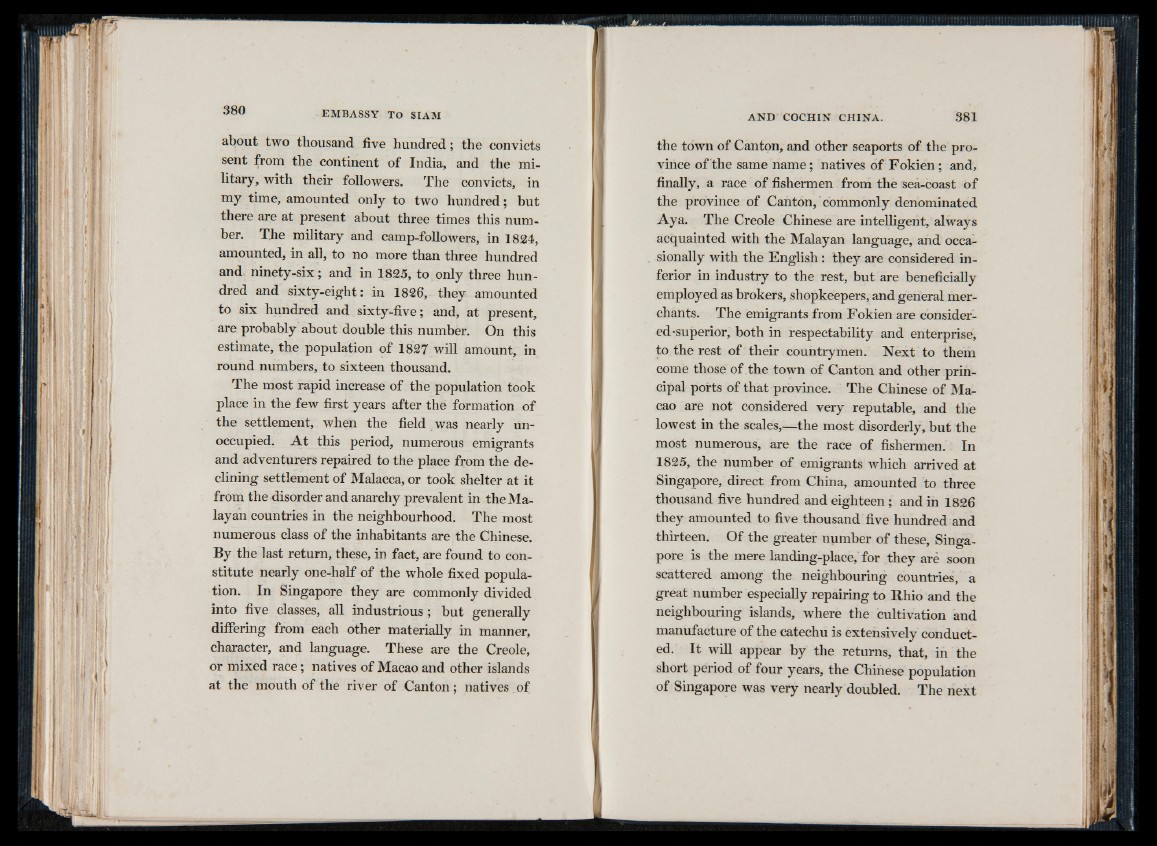
about two thousand five hundred; the convicts
sent from the continent of India, and the military,
with their followers. The convicts, in
my time, amounted only to two hundred; but
there are at present about three times this number.
The military and camp-followers, in 1824,
amounted, in all, to no more than three hundred
and ninety-six; and in 1825, to only three hundred
and sixty-eight: in 1826, they amounted
to six hundred and sixty-five; and, at present,
are probably about double this number. On this
estimate, the population of 1827 will amount, in
round numbers, to sixteen thousand.
The most rapid increase of the population took
place in the few first years after the formation of
the settlement, when the field was nearly unoccupied.
A t this period, numerous emigrants
and adventurers repaired to the place from the declining
settlement of Malacca, or took shelter at it
from the disorder and anarchy prevalent in the Malayan
countries in the neighbourhood. The most
numerous class of the inhabitants are the Chinese.
By the last return, these, in fact, are found to constitute
nearly one-half of the whole fixed population.
In Singapore they are commonly divided
into five classes, all industrious; but generally
differing from each other materially in manner,
character, and language. These are the Creole,
or mixed race; natives of Macao and other islands
at the mouth of the river of Canton; natives of
the town of Canton, and other seaports of the province
of the same name; natives of Fokien ; and,
finally, a race of fishermen from the sea-coast of
the province of Canton, commonly denominated
Aya. The Creole Chinese are intelligent, always
acquainted with the Malayan language, and occasionally
with the English: they are considered inferior
in industry to the rest, but are beneficially
employed as brokers, shopkeepers, and general merchants.
The emigrants from Fokien are considered
superior, both in respectability and enterprise,
to the rest of their countrymen. Next to them
come those of the town of Canton and other principal
ports of that province. The Chinese of Macao
are not considered very reputable, and the
lowest in the scales,—the most disorderly, but the
most numerous, are the race of fishermen. In
1825, the number of emigrants which arrived at
Singapore, direct from China, amounted to three
thousand five hundred and eighteen; and in 1826
they amounted to five thousand five hundred and
thirteen. Of the greater number of these, Singapore
is the mere landing-place, for they aré soon
scattered among the neighbouring countries, a
great number especially repairing to Rhio and the
neighbouring islands, where the cultivation and
manufacture of the catechu is extensively conducted.
I t will appear by the returns, that, in the
short period of four years, the Chinese population
of Singapore was very nearly doubled. The next